The Saxony duck is a heavy duck breed, one of the best dual-purpose breeds there is.
Their status is listed as threatened by The Livestock Conservancy, meaning there are less than 1000 known breeding birds in the United States and likely less than 5000 worldwide. In 2013, Germany recorded 1173 Saxony ducks nationwide.

Saxony ducks only come in one color and pattern, and it’s a good one. They are often considered one of the most beautiful duck breeds, and their coloring is almost completely unique. There are some Runner ducks and Call ducks with “Apricot Trout” coloring, identical to the Saxony, but they are rare.
Their color genotype is light phase wild-type mallard with a double blue dilution.
Drakes have a silver or blue-gray head, back, and wing markings. They have a rust-colored chest, cream belly and flanks, and white neck ring.
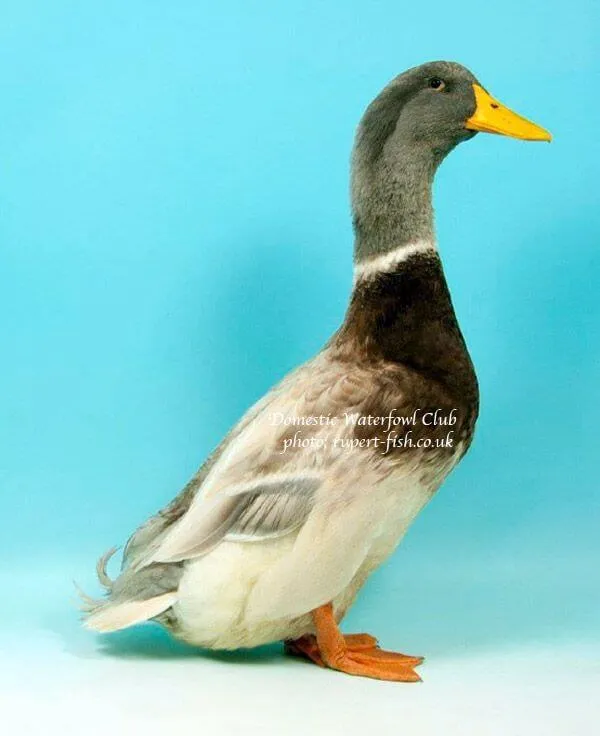
A Saxony drake at a show in 2015. Photo used with permission from The Domestic Waterfowl Club of Great Britain.
Ducks are a beautiful, rich buff or apricot color, with two creamy white stripes on the face and white marks on the chest and wingtips. Both sexes have orange feet and an orange-yellow bill, although males’ bills can have green shading and females’ bills can have brown shading.
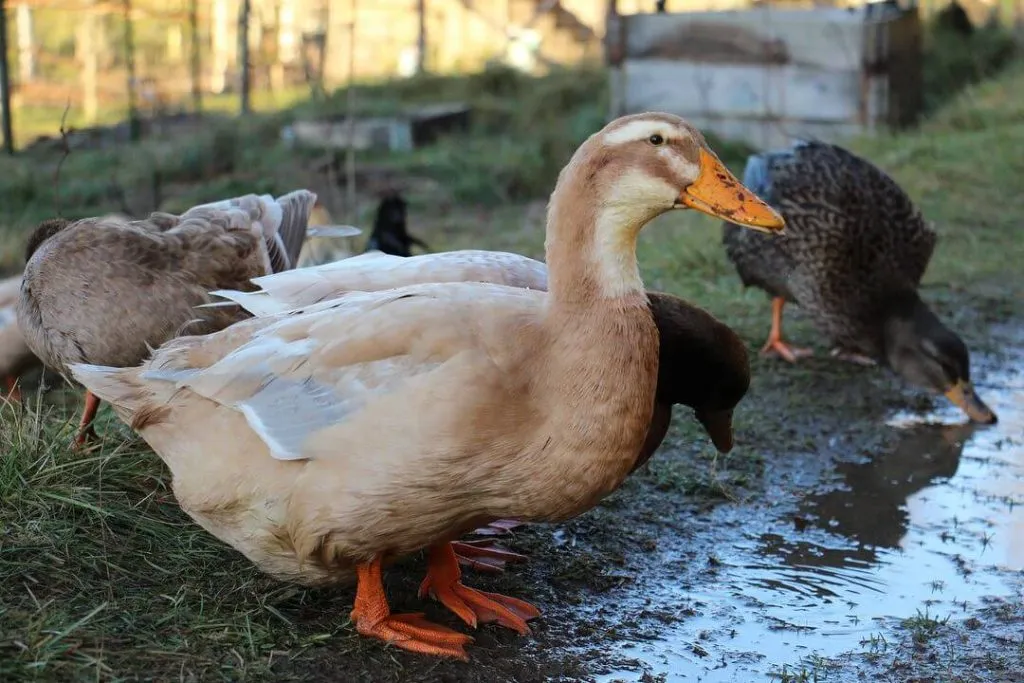
A beautiful Saxony duck. Photo courtesy of “ssbobon” (page no longer exists; not sure of new address).
The Saxony is excellent for both meat and eggs, laying about 100-240 white eggs a year. They weigh 7-9 lb (3-4 kg), so they’re one of the largest duck breeds. They are not particularly fast-growing, but their meat is flavorful and lean.
They don’t fly, are good foragers, and tend to be good broodies and mothers. They also tend to be very calm.
Overall, they’re a wonderful, beautiful breed that really deserves more attention and popularity in the poultry world.
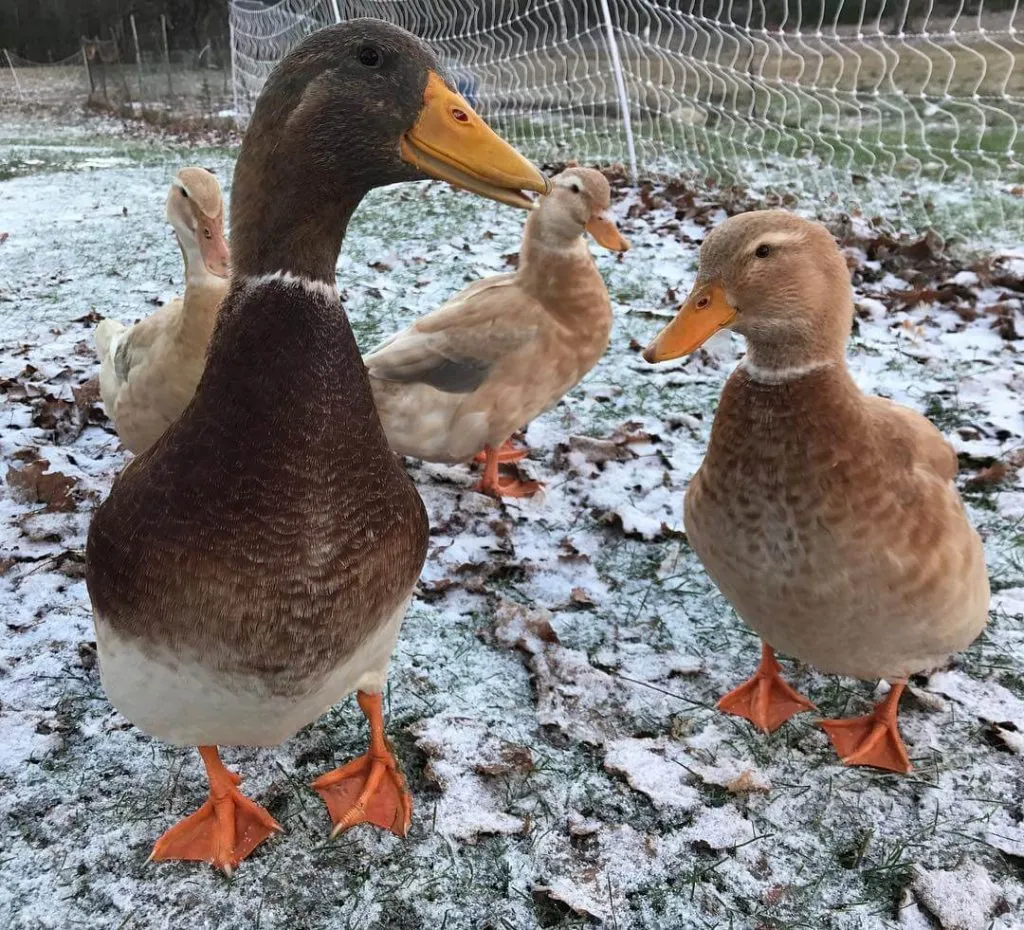
Saxony drake and ducks, who (according to their owner) get all the credit for this picture for being “mega sweeties.” Their names are Blue (the drake), Derpy, Alpha, and Lil’ Cutie.
History
The Saxony duck was developed from Rouens, German Pekins, and Blue Pomeranians in Chemnitz in the German state of Saxony, by a man named Albert Franz. They were first exhibited in 1934.
In World War II, Albert Franz was taken prisoner and nearly all of his ducks were lost, but he was able to continue breeding them in 1952. The Saxony was recognized as a breed in East Germany in 1957, in West Germany in 1958, and in the UK in 1982.
Holderread Waterfowl Farm imported them to the United States in 1984, and they were admitted into the APA’s Standard of Perfection in 2000. They have garnered some popularity, but they remain relatively rare.
PHOTO AND VIDEO GALLERY
A good overview of the Saxony duck breed:
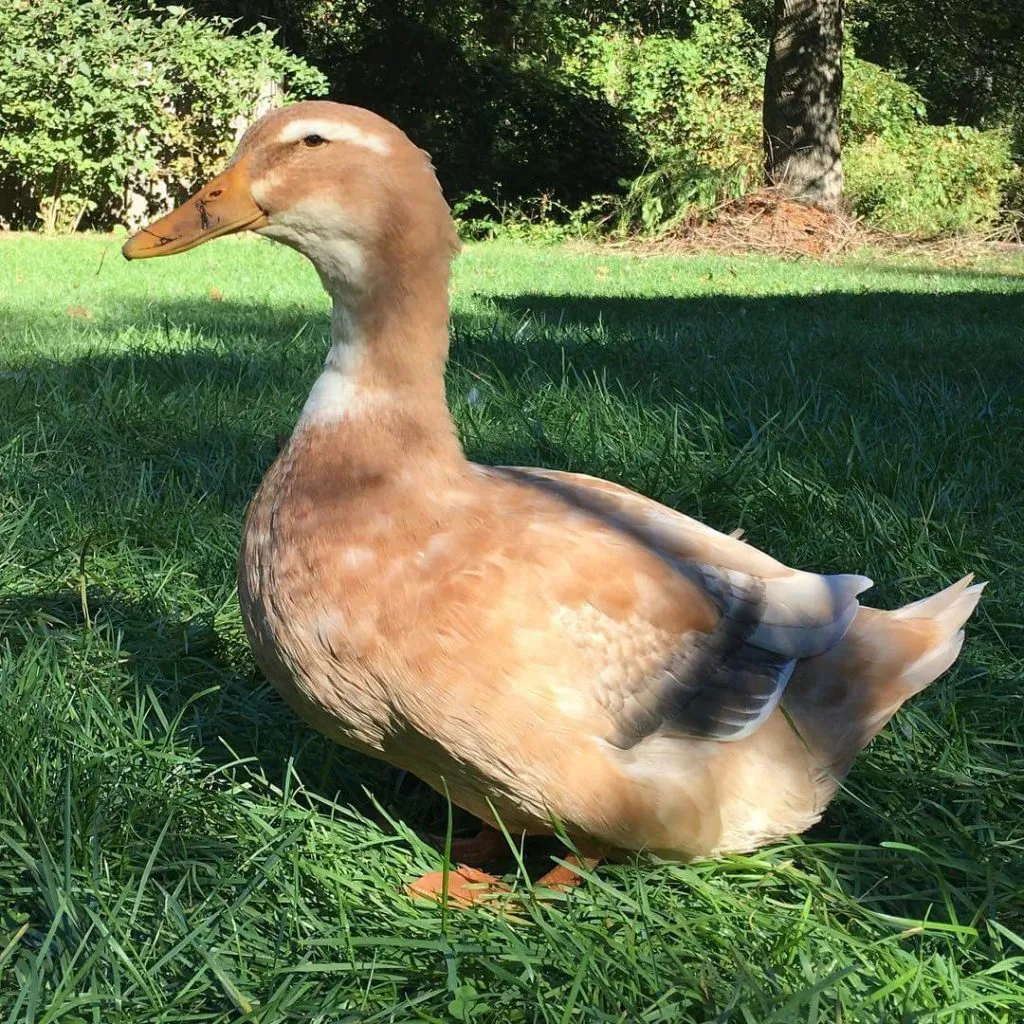
Saxony duck. Photo courtesy of Michaela Knott.
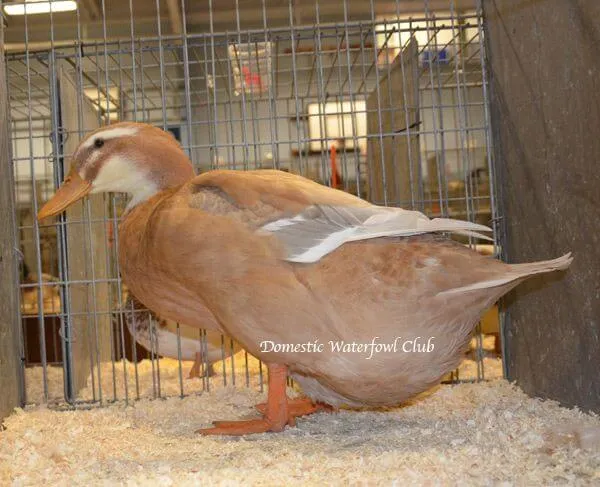
A female Saxony at a show. Photo used with permission from The Domestic Waterfowl Club of Great Britain.
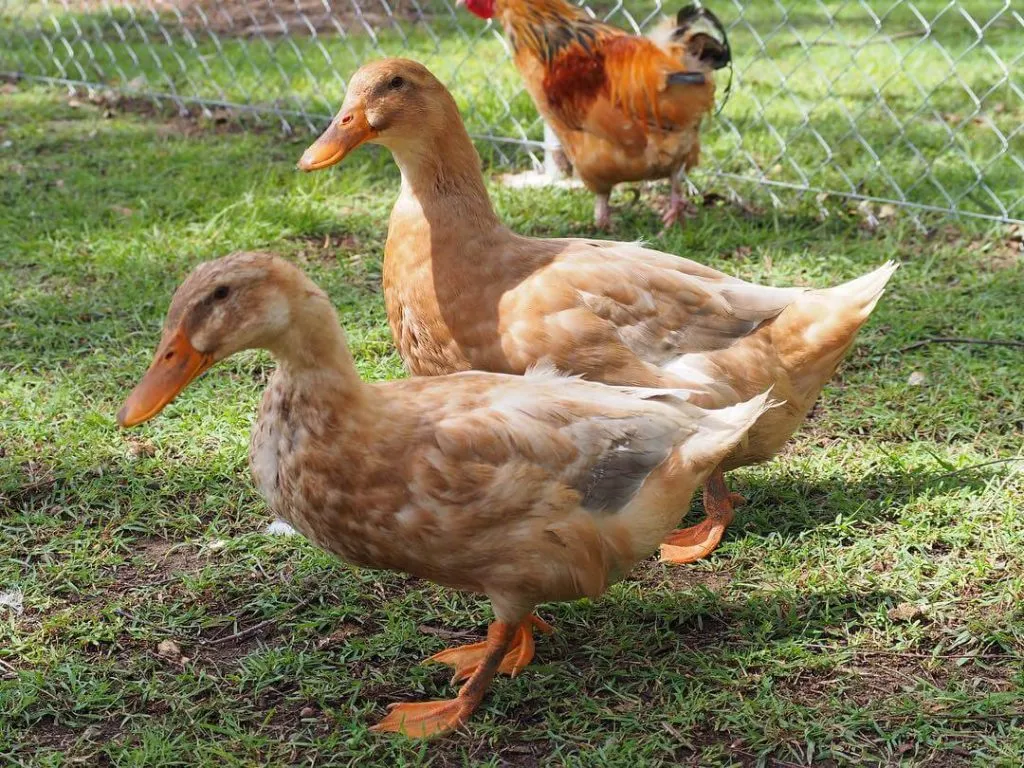
Two beautiful female Saxony ducks. Photo courtesy of Aimee Brown.
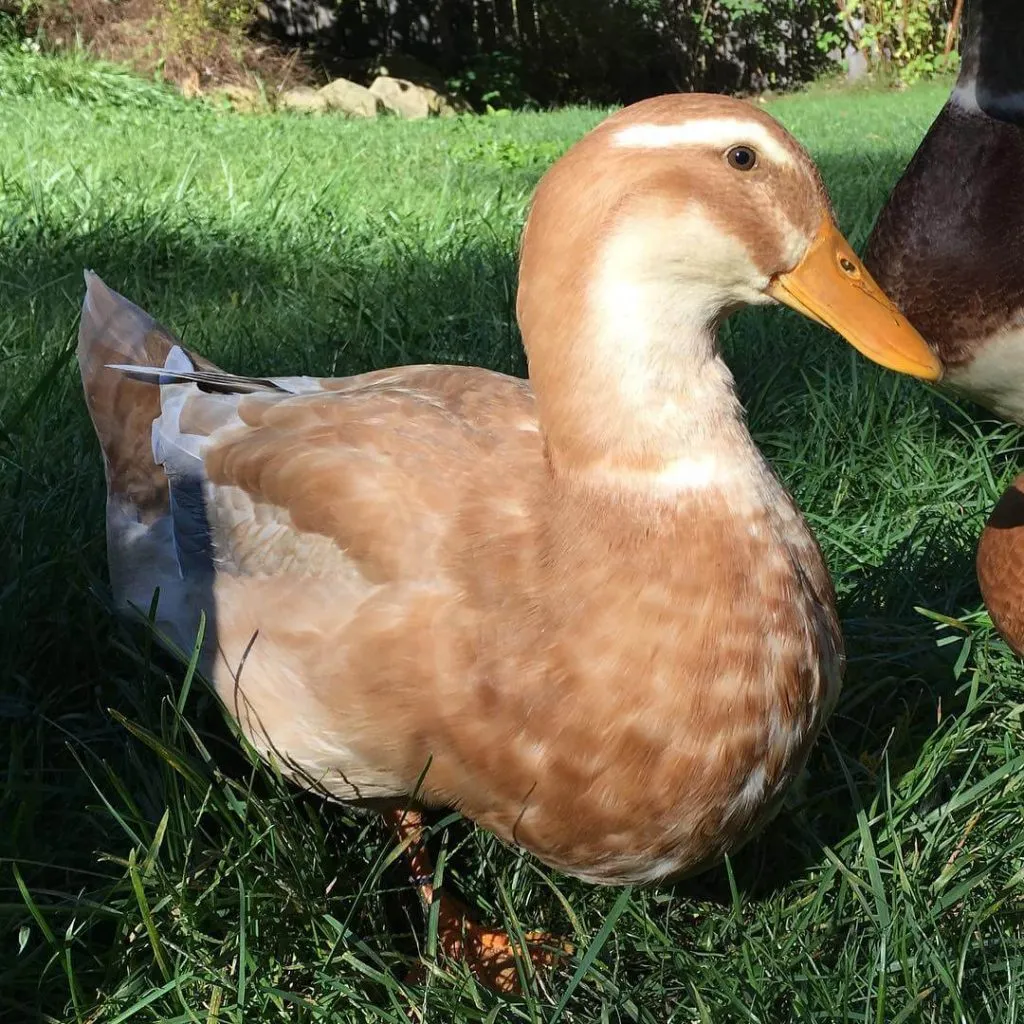
Saxony duck. Photo courtesy of Michaela Knott.
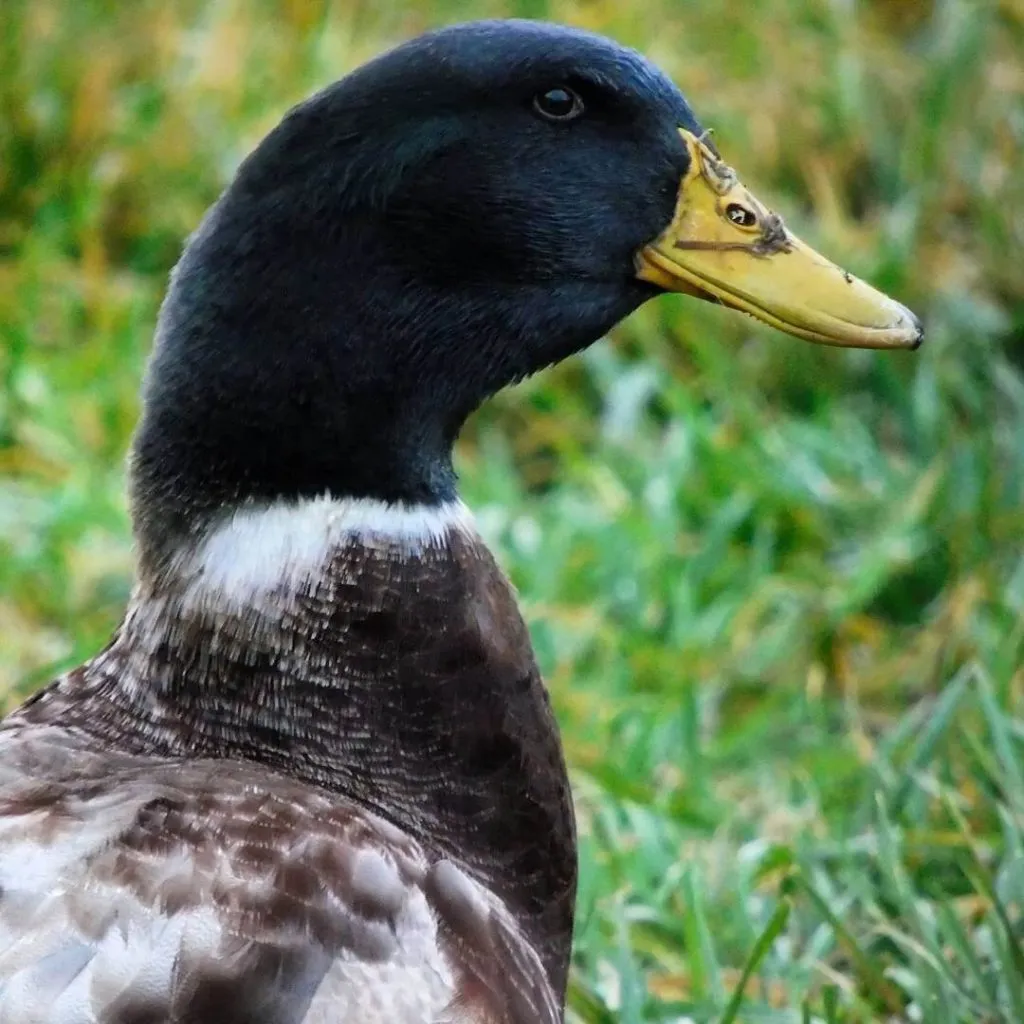
Head of a Saxony drake.
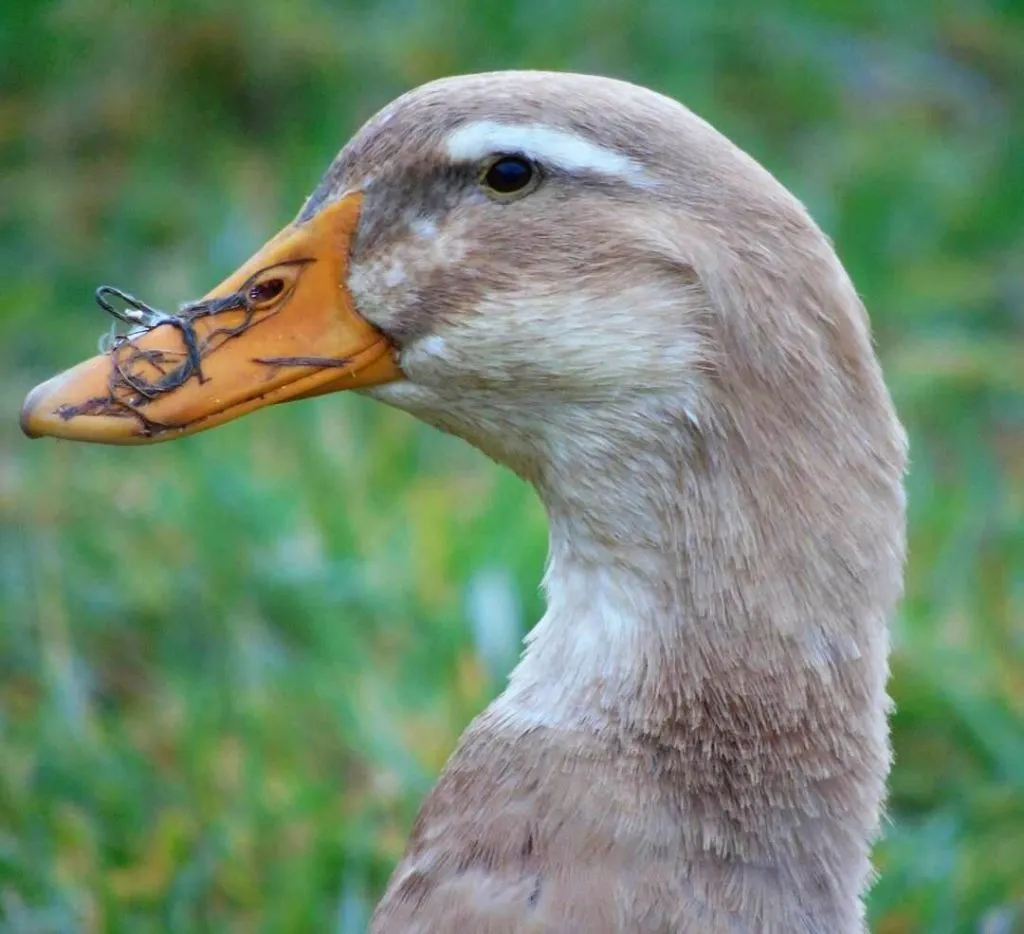
Head of a Saxony duck.
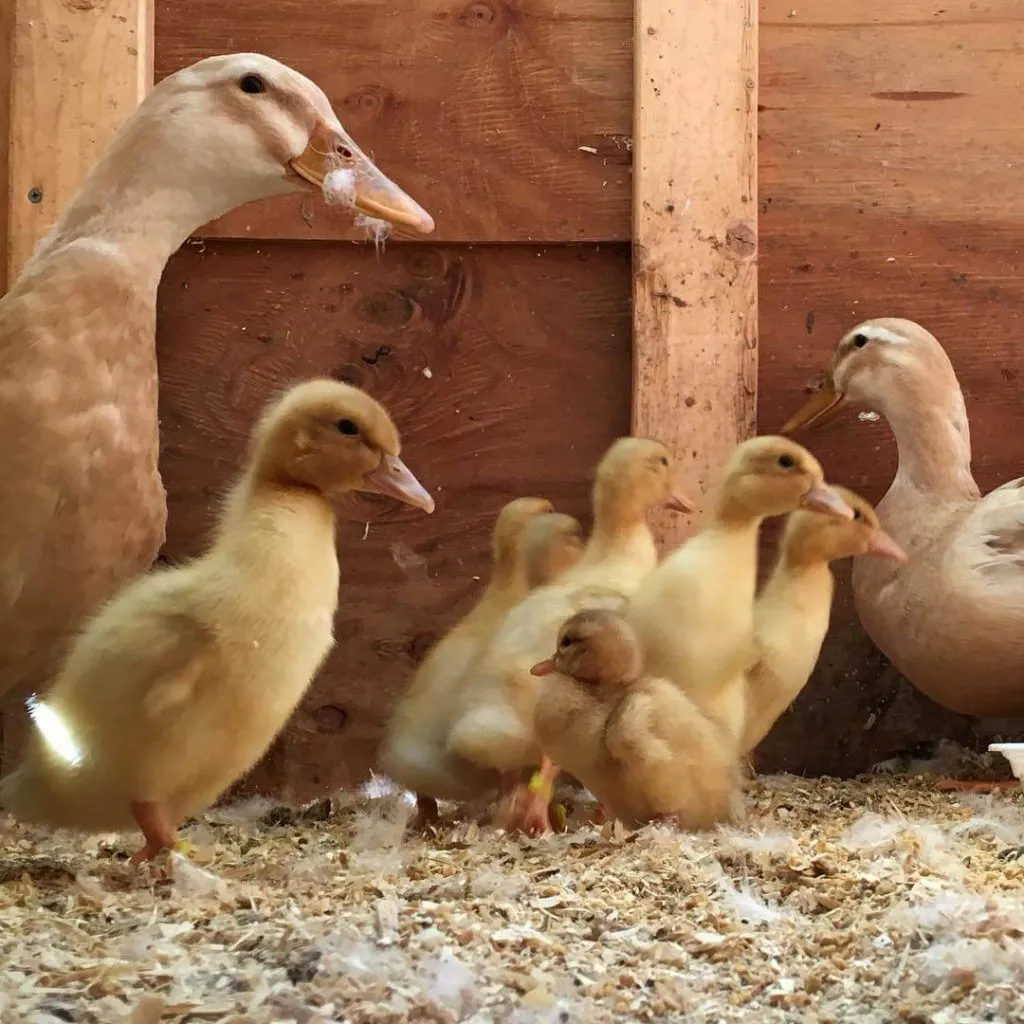
Two Saxony ducks and ducklings. Photo courtesy of Michaela Knott.
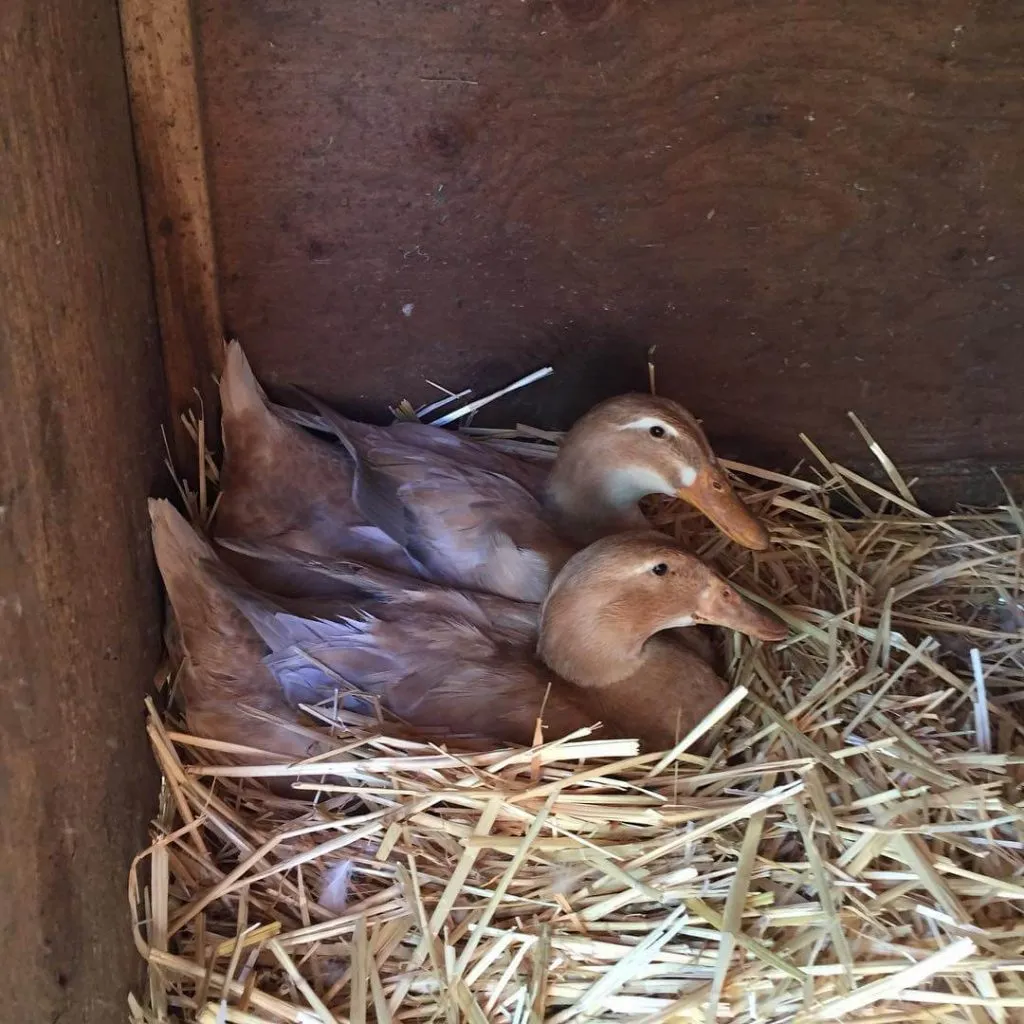
Two broody Saxonies coparenting.
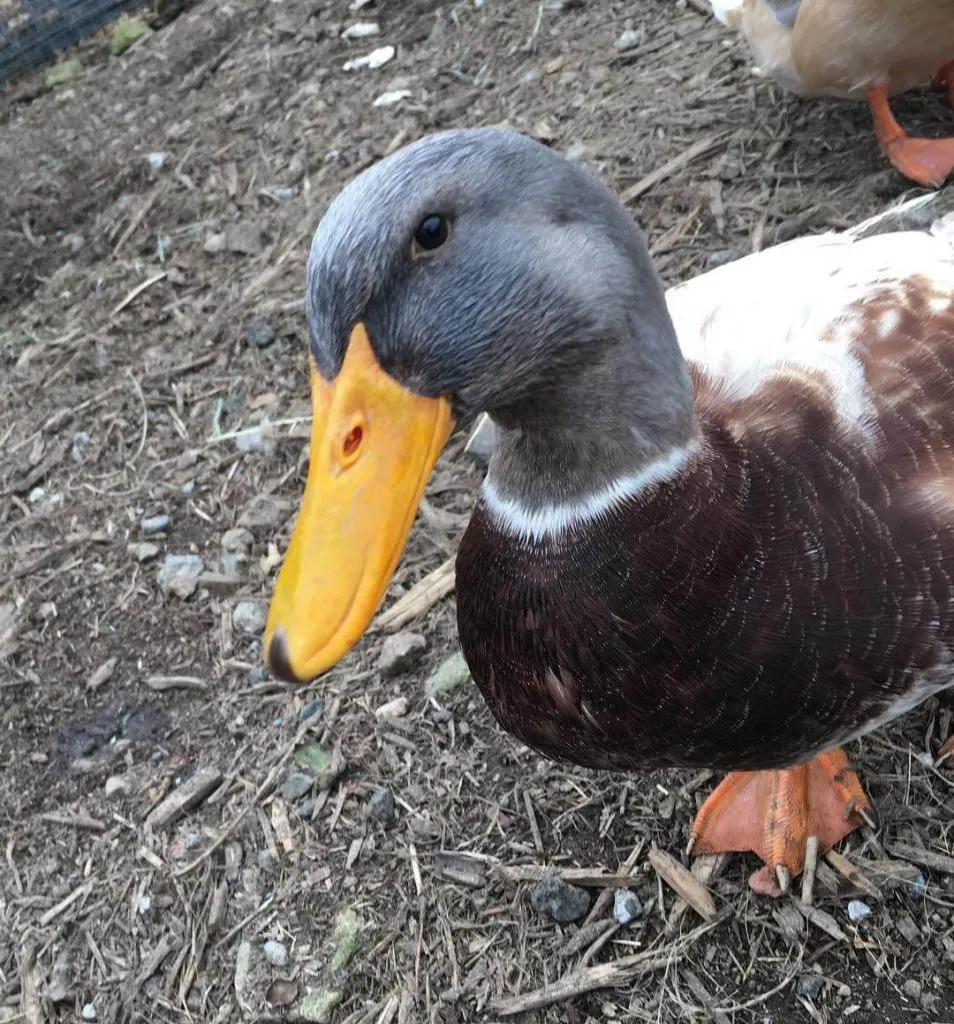
A handsome Saxony drake.
You might also like:
24 comments
Recientemente escribí una guía sobre cómo determinar si un pato es macho o hembra. Podría ayudarte: https://www.raising-ducks.com/how-to-sex-ducks
Hannah
Here's the basics of caring for ducklings:
1. At first, they will need to be in a brooder, which is a box or tote with heat lamps for warmth. Here are some links on setting up a brooder:
https://www.backyardchickens.com/articles/duckling-care-brooder-ideas.64854/
https://www.thecapecoop.com/diy-brooder-box/
2. Once they are old enough to stay warm by themselves, they will need permanent housing. Most people keep their ducks in a small house, crate, or coop, for the night, and let them into a run or yard for the day. This is a big subject, so I can't cover it in one comment very well, but you can research duck housing yourself. If your weather is good, you can let them outside under supervision even from day one, as long as you make sure they don't get cold and are safe from predators.
3. Here's my article about feeding ducklings: https://www.raising-ducks.com/feeding-ducklings/
4. They need water that is deep enough to dunk their head in. Chick waterers may work for the first few days, but they need some kind of pan or bucket so they can dunk their heads. They are extremely messy with water, so it would be a good idea to build an anti-mess water station. The best one I've seen was a wire platform over a bowl, with the waterer on top. All spillage would go through the wire and into the bowl underneath, instead of into the bedding. (Once they move outside, this won't matter so much.)
5. Swimming water isn't absolutely necessary, but it's nice. As ducklings, you will need to supervise all their swimming sessions. Ducklings CAN drown very easily! When they have a real mother, she can tell them when it's time to get out, but since you will probably be the mother, you will have to do it for them. Limit baths to once a day and probably no more than 10-15 minutes.
6. There are many things you'll need to know, especially once they become adults. Just make sure you research and read as much as you can before you get the ducklings, so you know what you're doing.
Hope that helps! Let me know if you have any other questions.
Sincerely,
Hannah Miller
Yep, this can happen. I've heard of several people whose ducks changed sex. It's a strange and rare phenomenon, but a real one. Here's an article about it: https://www.bbc.com/news/science-environment-40016817
Hannah
How old are the females before they begin laying?
Thank you.
The females should begin laying when they're around 20-24 weeks old.
Some ducks won't use nest boxes. Some will just lay in the corner of the coop or something. And some ducks will actively seek out nests, and the more private and dark, the better.
You might try something like this, though (plastic totes with holes cut in the sides): https://www.backyardchickens.com/threads/nesting-boxes-for-ducks-made-easy.1315536/
A few other ideas:
https://www.lifeisjustducky.com/wp-content/uploads/2016/04/nesting1.jpg
http://petdiys.com/wp-content/uploads/2014/03/DIY-Barrel-Duck-Nest-Box1.jpg
http://blog.mypetchicken.com/wp-content/uploads/2019/02/Duck-Nesting-in-Milk-Crate-credit-Sasha-Fox-e1550070345928.png
https://www.raising-ducks.com/wp-content/uploads/2017/12/nest2.jpg
Hannah
Check out this article (if you haven't already) and see if any of the reasons might apply to your ducks: https://www.raising-ducks.com/ducks-not-laying/
Hope she'll start laying soon. :-)
Hannah
The only way to know for sure is to find out from the breeder. If they don't know, it's a mixed breed. Purebred ducks, especially rare ones like the Saxony, have to be intentionally bred. It's easy to make random crosses that happen to look like a purebred (in coloration, if nothing else), but that doesn't mean anything. I've seen random Mallard crosses that looked like Blue Swedishes, Appleyards, and other breeds.
You could also compare your duck's characteristics (when she's an adult) to a Saxony and see if it matches. But you'll have to look at conformation, weight, egglaying, and other characteristics, not just color.
Also, do you have any other ducks? Ducks need a companion.
Hannah
I've heard of TSC getting their ducklings from Mt. Healthy Hatcheries, Townline Hatchery, Ideal Poultry, Privett Hatchery, and Cackle Hatchery.
Cackle Hatchery is the only one of those that sells Saxony ducks. If any TSCs use Hoover's Hatchery, they also sell Saxonies. So if you can find out what hatchery your TSC uses, and if they stock Saxonies, and if your duck looks like a Saxony as an adult, that would be proof, I guess. A lot of those hatcheries also sell Buff Orpington ducks and some others that have buff or buff-like coloring.
Hannah
Hannah
It's not always easy, but I think you can do it! I was eight years old when I got my first ducks. The main tip I have is to learn as much as you can about ducks before you get any. Read a book or two about raising ducks and research what they need and how to take care of them. Your parents should also research and read about ducks if they don't know much about them.
Remember that ducks will need to be cared for every single day, no matter what, so make sure you'll have time for them every day.
Don't start with too many or too few ducks - three to six is a good starting point for many people.
Good luck!
Hannah
Abigail
There is no "best" duck breed. All duck breeds are good, but some may suit you and your circumstances better. Do you have close neighbors? What do you want ducks for? Look at what kind of ducks are available in your area as well. I'm personally very fond of Muscovy ducks, and I love my Saxony ducks.
Hannah
Leave a comment
Your email address will not be published.